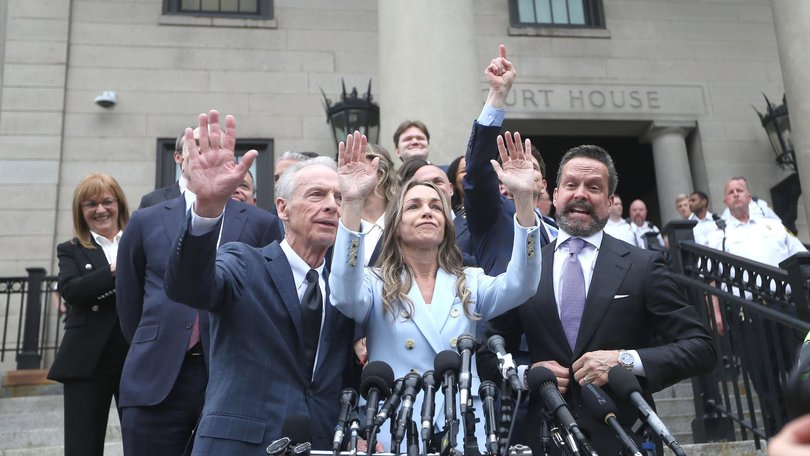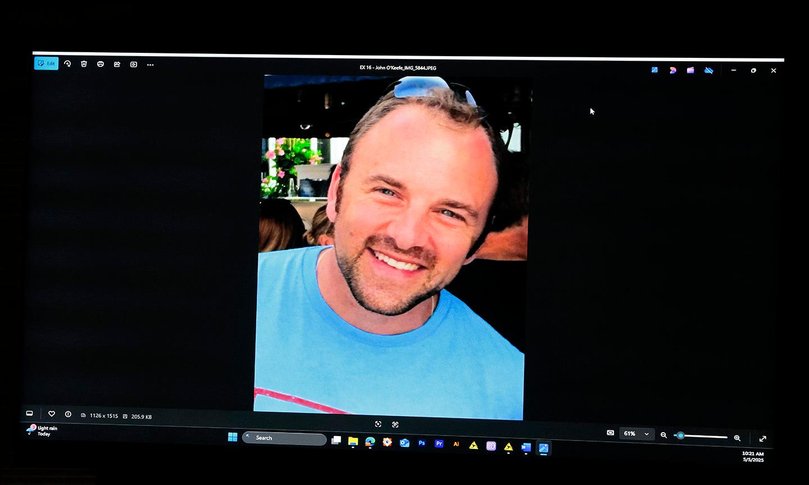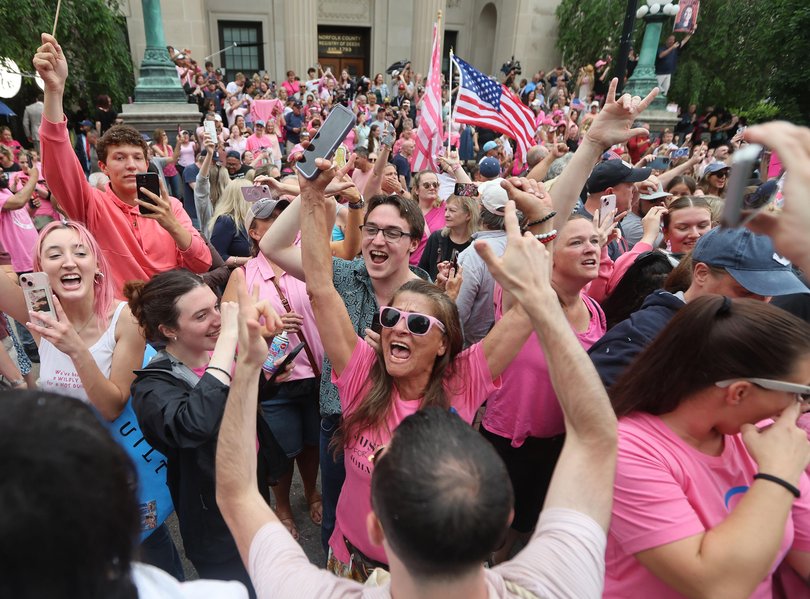Crowds outside court celebrate after drunk driver Karen Read found not guilty of boyfriend’s murder

A Boston jury found Karen Read not guilty of killing her police officer boyfriend, John O’Keefe, acquitting her a year after a judge declared a mistrial on identical charges.
Prosecutors alleged that Read, a former equity analyst and adjunct professor at Bentley College, fatally hit O’Keefe with her SUV amid an argument after a night out drinking in 2022, while defence lawyers argued that law enforcement framed Read as part of a cover-up.
The dramatic and complex case became a tabloid and true-crime fixture, drawing national attention and throngs of supporters for each side, who rallied daily outside the courthouse.
Sign up to The Nightly's newsletters.
Get the first look at the digital newspaper, curated daily stories and breaking headlines delivered to your inbox.
By continuing you agree to our Terms and Privacy Policy.Read faced charges of second-degree murder, manslaughter while operating under the influence of alcohol and leaving the scene of personal injury and death.
A jury found her guilty on the lesser charge of drunk driving, a charge for which Read faces one year of probation.

The jury delivered its verdict after 21 hours of deliberations. Read, dressed in a light-blue suit, looked emotional, hugging her legal team as the verdict was read.
An eruption of cheers from Read’s supporters outside the courthouse could be heard from inside the courtroom.
Outside, Read’s pink-clad loyalists sang the national anthem and whooped in celebration.
“No-one has fought harder for justice for John O’Keefe than I have,” she said in a brief statement.
Her father, William, thanked “all the content providers who helped spread the word”.
Asked why he thought the second trial’s outcome was different, Mr Read said: “Another year of information circulating in the public, and people are aware of what’s happened.”
Read’s first trial ended last July in a mistrial, with jurors deadlocked after more than 26 hours of deliberations.
The verdict puts an end to a retrial that began in April and that, like its predecessor, stretched into a months-long obsession for people in the Boston area and around the country.
For more than three years, trial watchers have remained transfixed by the dramatic story fuelled by duelling narratives:
One of a stormy romance between Read, 45 and O’Keefe, 46, pictured inset, that ended in the police officer’s murder, or one of an innocent woman framed by her boyfriend’s conspiratorial law enforcement colleagues.
At the retrial, both the prosecution and defence adopted a “less is more strategy,” moderating their approach based on what worked in the first trial, said Daniel Medwed, a law professor at Northeastern University who has followed both of Read’s trials.
Both sides called fewer witnesses.
Special prosecutor Hank Brennan tried the case for the state instead of Norfolk Assistant District Attorney Adam Lally, and Read expanded her defence counsel to include a civil attorney who served as a juror in her first trial.
The prosecution and defence have only agreed on how the night of January 28, 2022, that night began: with O’Keefe and Read drinking at the Waterfall Bar in Canton, Massachusetts. There, they ran into Boston Police Sergeant Brian Albert who invited them to a party at his Canton home.
Read drove O’Keefe in her black Lexus SUV to Albert’s party without going inside.
After From that point forward, the two sides have drastically different views on the events prior to until both agree that Read finding found O’Keefe unresponsive outside Albert’s house the next morning.

An autopsy determined that he died of a combination of hypothermia and blunt-force trauma.
According to prosecutors, the couple had a turbulent relationship and were fighting the night Read dropped O’Keefe off at the party. They alleged she fatally struck him while making a three-point turn in Sgt Albert’s driveway and sped off, citing Read’s vehicle data.
Their evidence focused on a broken taillight on Read’s SUV, bits of which were found at the scene, and testimony of a paramedic-firefighter who said she heard Read repeatedly cry “I hit him” after O’Keefe’s body was found the next morning.
The defece proposed a different theory: That the investigation into O’Keefe’s death was plagued by corruption and misconduct and that evidence was mishandled to implicate Read.
The defence said investigators failed to search Albert’s home and cited the behaviour of Michael Proctor, the case’s lead investigator who was later fired by the Massachusetts State Police because of alleged misconduct that included crude and sexist text messages about Read.
As the prosecution put forth a “tighter, more precise” case with fewer unforced errors, the defense coalesced around a “reasonable doubt” theory that the government would not be able to meet its burden of proving Read struck O’Keefe, Professor Medwed said. The defence leaned heavily into undermining the prosecution’s argument with crash reconstruction and forensic experts testifying when Read’s taillight was broken.
During the first trial Professor Medwed said the defence had leaned more heavily on a theory of an alternate attacker, postulating that O’Keefe was attacked by Albert’s dog and beaten by members of local law enforcement at the party before he was tossed outside to die in an oncoming snowstorm.
Forensic experts for the defence said O’Keefe’s injuries were inconsistent with being struck at the speed at which the prosecutors claimed Read was driving, and said Read’s taillight damage was from striking another vehicle in the driveway.
Read did not take the stand in her trial.
Read and O’Keefe’s family members were regular fixtures at the trial, which that drew so many demonstrators that Judge Cannone extended the buffer zone outside the courthouse.
“Justice for John” sign holders faced off against Read’s pink-clad supporters who flashed the “I love you” hand sign each time the defendant passed by. Read supporters, pictured above, waved US flags and sang God Bless America,
Case witnesses, including homeowner Sgt Albert, said the outcome was “a devastating miscarriage of justice”.
“While we may have more to say in the future, today we mourn with John’s family and lament the cruel reality that this prosecution was infected by lies and conspiracy theories spread by Karen Read, her defence team, and some in the media,” they said in a joint statement.
Professor Medwed said that while cameras in court and livestreams of trials have made it easier to follow cases like Read’s, the trial also had unlikely characters a telegenic woman accused of murder and a police officer victim whose death wasn’t in the line of duty - and the powerful pull of conspiracy theories.
“The case is a really spicy stew for public consumption,” Professor Medwed said. “There were several ingredients that, unsurprisingly, captured a lot of attention.”
The case is set to be the subject of an upcoming Netflix documentary.
